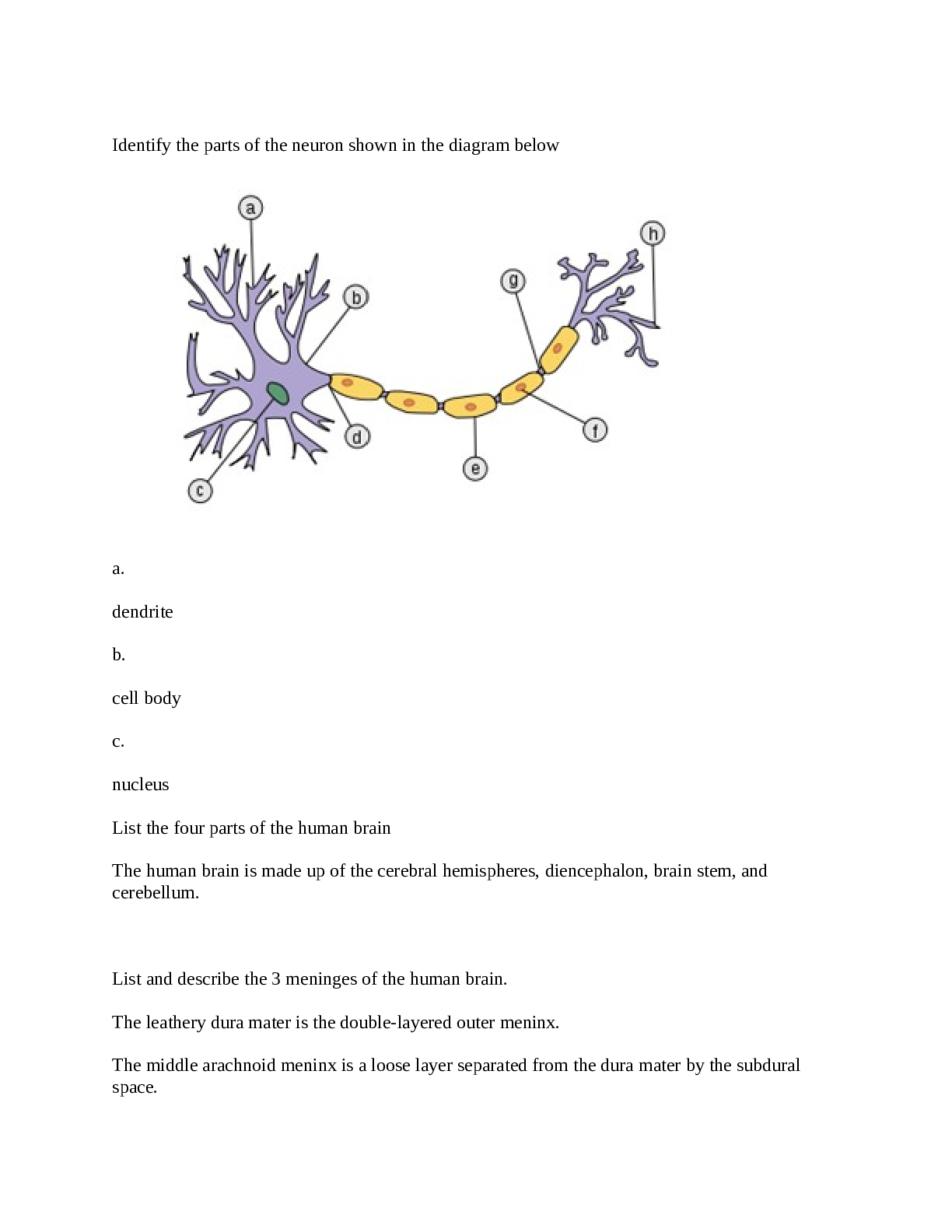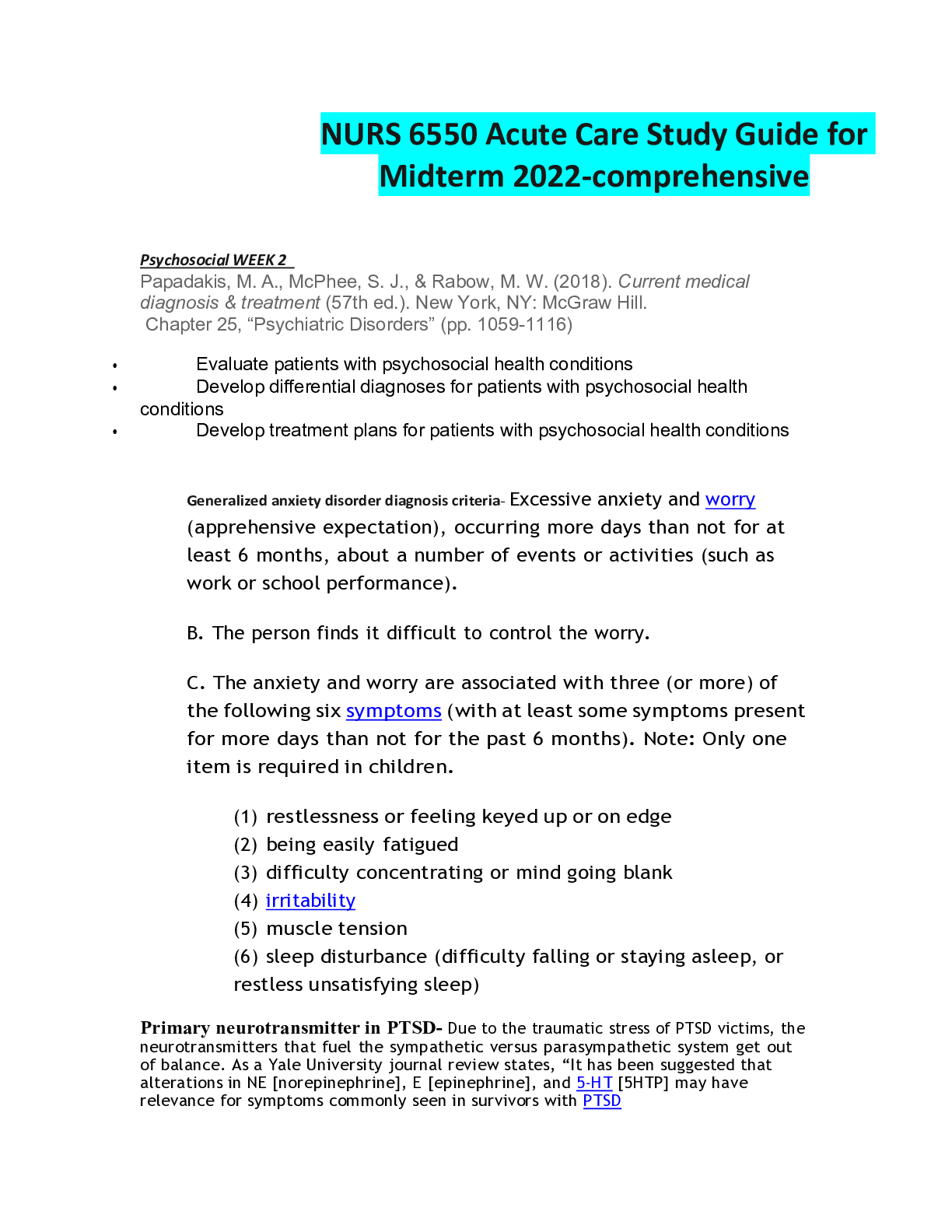*NURSING > STUDY GUIDE > NR-507 Best Study Guide for Exam Graded A+ (All)
NR-507 Best Study Guide for Exam Graded A+
Document Content and Description Below
Types of immunity-e.g. innate, active, etc (ch 7 ,191) Innate immunity includes two lines of defense: natural barriers and inflammation Natural barriers are physical, mechanical, and biochemical... barriers at the body’s surfaces and are in place at birth to prevent damage by substances in the environment and thwart infection by pathogenic microorganisms. the natural epithelial barrier and inflammation confer innate resistance and protection, commonly referred to as innate, native, or natural immunity. Inflammation associated with infection usually initiates an adaptive process that results in a long-term and very effective immunity to the infecting microorganism, referred to as adaptive, acquired, or specific immunity. Adaptive immunity is relatively slow to develop but has memory and more rapidly targets and eradicates a second infection with a particular disease-causing microorganism. Innate immunity includes two lines of defense: natural barriers and inflammation. Natural barriers are physical, mechanical, and biochemical barriers at the body’s surfaces and are in place at birth to prevent damage by substances in the environment and thwart infection by pathogenic microorganisms INNATE IMMUNITY BARRIERS INFLAMMATORY RESPONSE ADAPTIVE (ACQUIRED) IMMUNITY Level of defense First line of defense against infection and tissue injury Second line of defense; occurs as a response to tissue injury or infection Third line ofdefense; initiated when innate immune system signals the cells ofadaptive immunity Timing of defense Constant Immediate response Delay between primary exposure to antigen and maximum response; immediate against secondary exposure to antigen Specificity Broadly specific Broadly specific Response is very specific toward “antigen” Cells Epithelial cells Mast cells, granulocytes (neutrophils, eosinophils, basophils), monocytes/macrophages, natural killer (NK) cells, platelets, endothelial cells T lymphocytes, B lymphocytes, macrophages, dendritic cells Memory No memory involved No memory involved Specific immunologic memory by T and B lymphocytes Peptides Defensins, cathelicidins, collectins, lactoferrin, bacterial toxins Complement, clotting factors, kinins Antibodies, complement Protection Protection includes anatomic barriers (i.e., skin and mucous membranes), cells and secretory molecules or cytokines (e.g., lysozymes, low pH of stomach and urine), and ciliary activity Protection includes vascular responses, cellular components (e.g., mast cells, neutrophils, macrophages), secretory molecules or cytokines, and activation of plasma protein systems Protection includes activated T and B lymphocytes, cytokines, and antibodies 2. Alveolar ventilation/perfusion- (ch, 34,pg 1238) The relationship between arterial perfusion and alveolar gas pressure at the base of the lungs is best described as: arterial perfusion pressure exceeds alveolar gas pressure. Effective gas exchange depends on an approximately even distribution of gas (ventilation) and blood (perfusion) in all portions of the lungs. The lungs are suspended from the hila in the thoracic cavity. When the individual is in an upright position (sitting or standing), gravity pulls the lungs down toward the diaphragm and compresses their lower portions or bases. 3. Dermatologic conditions e.g. pityriasis rosea (ch46, pg 1630/1631) Psoriasis, pityriasis rosea, and lichen planus are inflammatory disorders characterized by papules, scales, plaques, and erythema Psoriasis is a chronic, relapsing, proliferative, inflammatory disorder that involves the skin, scalp, and nails and can occur at any age. Pityriasis rosea is a benign self-limiting inflammatory disorder that occurs more often in young adults, with seasonal peaks in the spring and fall. The cause is unknown but thought to be associated with a virus (e.g., human herpesvirus 6 [HHV-6] and HHV-7) because of the timing and clustering of the outbreaks 1 Pityriasis rosea begins as a single lesion known as a herald patch that is circular, demarcated, and salmon-pink; is approximately 3 to 4 cm in diameter; and is usually located on the trunk Lichen planus (LP) is a benign, autoimmune inflammatory disorder of the skin and mucous membranes with multiple clinical variations. The cause is unknown, but T cells, adhesion molecules, inflammatory cytokines, perforin, and antigen-presenting cells are involved.The infiltrate of T cells mediates immunoreactivity against basal layer keratinocytes, which have altered surface antigens and adhesion molecules LP is also linked to hepatitis C virus. Some individuals develop lichenoid lesions after exposure to drugs or filmprocessing chemicals. The age of onset is usually between 30 and 70 years. The disorder begins with flat purple, polygonal, pruritic, nonscaling papules 2 to 4 mm in size, usually located on the wrists, ankles, lower legs, and genitalia New lesions are pale pink and evolve into a dark violet. Persistent lesions may be thickened and red, forming hypertrophic LP. Oral lesions (oral lichen planus) appear as lacy white rings that must be differentiated from leukoplakia or oral candidiasis and they may be precancerous lesions 4. Croup (C 36,pg 1294)- Croup illnesses can be divided into two categories: (1) acute laryngotracheobronchitis (croup) and (2) spasmodic croup. Diphtheria can be considered a croup illness but is now rare because of vaccinations. Croup illnesses are all characterized by infection and obstruction of the upper airways. Croup is an acute laryngotracheobronchitis and most commonly occurs in children from 6 months to 3 years of age, with peak incidence at 2 years of age The incidence of croup is highest in late autumn and winter, corresponding to the parainfluenza and RSV seasons, respectively. Croup is more common in boys than girls. In a significant portion of affected children, croup is a recurrent problem during childhood, and there is a family history of croup in about 15% of cases Chickenpox (varicella) and herpes zoster (shingles) are produced by the varicella-zoster virus (VZV). VZV is a complex herpes group deoxyribonucleic acid (DNA) virus. The incubation period is 10 to 27 days, averaging 14 days. Productive infection occurs within keratinocytes such that the vesicular lesions occur in the epidermis, and an inflammatory infiltrate is often present 5. Types of anemia (ch 28,pg 987-1002) anemia is a reduction in the total number of erythrocytes in the circulating blood or a decrease in the quality or quantity of hemoglobin. Anemias commonly result from (1) impaired erythrocyte production, (2) blood loss (acute or chronic), (3) increased erythrocyte destruction, or (4) a combination of these three factors. Pernicious anemia (PA), the most common type of megaloblastic anemia, is caused by vitamin B12deficiency, which is often associated with the end stage of type A chronic atrophic (congenital or autoimmune) gastritis. PA results from inadequate vitamin B12 absorption because of autoantibodies against the B12transporter IF Folate (folic acid) is an essential vitamin for RNA and DNA synthesis within the maturing erythrocyte. Folates are coenzymes required for the synthesis of thymine and purines (adenine and guanine) and the conversion of homocysteine to methionine. Deficient production of thymine, in particular, affects cells undergoing rapid division (e.g., bone marrow cells undergoing erythropoiesis). Humans are totally dependent on dietary intake to meet the daily requirement of 50 to 200 mcg/day. Folate deficiency anemia is caused by inadequate dietary intake of folate. Both anemias respond to replacement therapy. The microcytic-hypochromic anemias are characterized by abnormally small erythrocytes that contain abnormally reduced amounts of hemoglobin Microcytic-hypochromic anemia can result from (1) disorders of iron metabolism, (2) disorders ofporphyrin and heme synthesis, or (3) disorders of globin synthesis. Specific disorders include iron deficiency anemia, side roblastic anemia, and thalassemia Iron deficiency anemia (IDA) is the most common type of anemia worldwide, occurring in both developing and developed countries and affecting as many as one fifth of the world population. Certain populations are at high risk for developing hypoferremia and IDA and include individuals living in poverty, women of childbearing age, and children. Iron deficiency in children is associated with numerous adverse health-related manifestations, especially cognitive impairment, which may be irreversible Sideroblastic anemias (SAs) are a heterogeneous group of disorders characterized by anemia of varying severity caused by a defect in mitochondrial heme synthesis.SA is characterized by the presence of ringed side roblasts within the bone marrow. SA results from defects in mitochondrial metabolism leading to ineffective iron uptake and dysfunctional heme synthesis. The characteristic cell in the bone marrow, a ringed sideroblast, is an erythroblast containing iron granules arranged around the nucleus. SAs may be hereditary or acquired, and treatment varies depending on the cause. Normocytic-normochromic anemias (NNAs) are characterized by erythrocytes that are relatively normal in size and hemoglobin content but insufficient in number. These anemias have no common etiology, pathologic 2 mechanisms, or morphologic characteristics. They are less frequent than macrocytic-normochromic and microcytic-hypochromic anemias. NNAs include five distinct groups: aplastic (damage to bone marrow erythropoiesis); posthemorrhagic (acute blood loss); acquired hemolytic (immune destruction of erythrocytes); hereditary hemolytic, such as sickle cell (destruction by eryptosis); and anemia of chronic inflammation (multiple causes) Macrocytic-normochromic, or megaloblastic-normochromic, anemias are characterized by larger than normal erythrocytes with normal levels of hemoglobin. They most commonly are caused by deficiency of vitamin B12 (PA) or folate. Aplastic anemia (AA) is a critical condition characterized by pancytopenia, a reduction or absence of all three blood cell types, resulting from failure or suppression of bone marrow to produce adequate amounts of blood cells Posthemorrhagic anemia is a normocytic-normochromic anemia caused by acute blood loss. Initial manifestations of this event depend on the severity of blood loss. If blood loss is severe, the significant manifestations are related to loss of blood volume rather than loss of hemoglobin. The predominant event in hemolytic anemias is premature accelerated destruction of erythrocytes, either episodically or continuously. The consequences of the anemia are elevated levels of erythropoietin to induce accelerated production of erythrocytes and an increase in the products of hemoglobin catabolism. Anemia of chronic disease (ACD) is a mild to moderate anemia resulting from decreased erythropoiesis in individuals with conditions of chronic systemic disease or inflammation (e.g., infections, cancer, and chronic inflammatory or autoimmune diseases). These conditions include acquired immunodeficiency disease (AIDS), malaria (particularly that caused by Plasmodium falciparum), rheumatoid arthritis, systemic lupus erythematosus (SLE), acute and chronic hepatitis, and chronic renal failure (a condition in which almost all affected individuals are anemic) This form of anemia also is commonly noted in the presence of congestive heart failure (CHF). The anemia develops after 1 to 2 months of disease activity. The initial severity is related to that of the underlying disorder but, although persistent, it usually does not progress. Individuals may be asymptomatic, or the anemia may be a coincidental clinical finding. [Show More]
Last updated: 1 year ago
Preview 1 out of 20 pages
Instant download
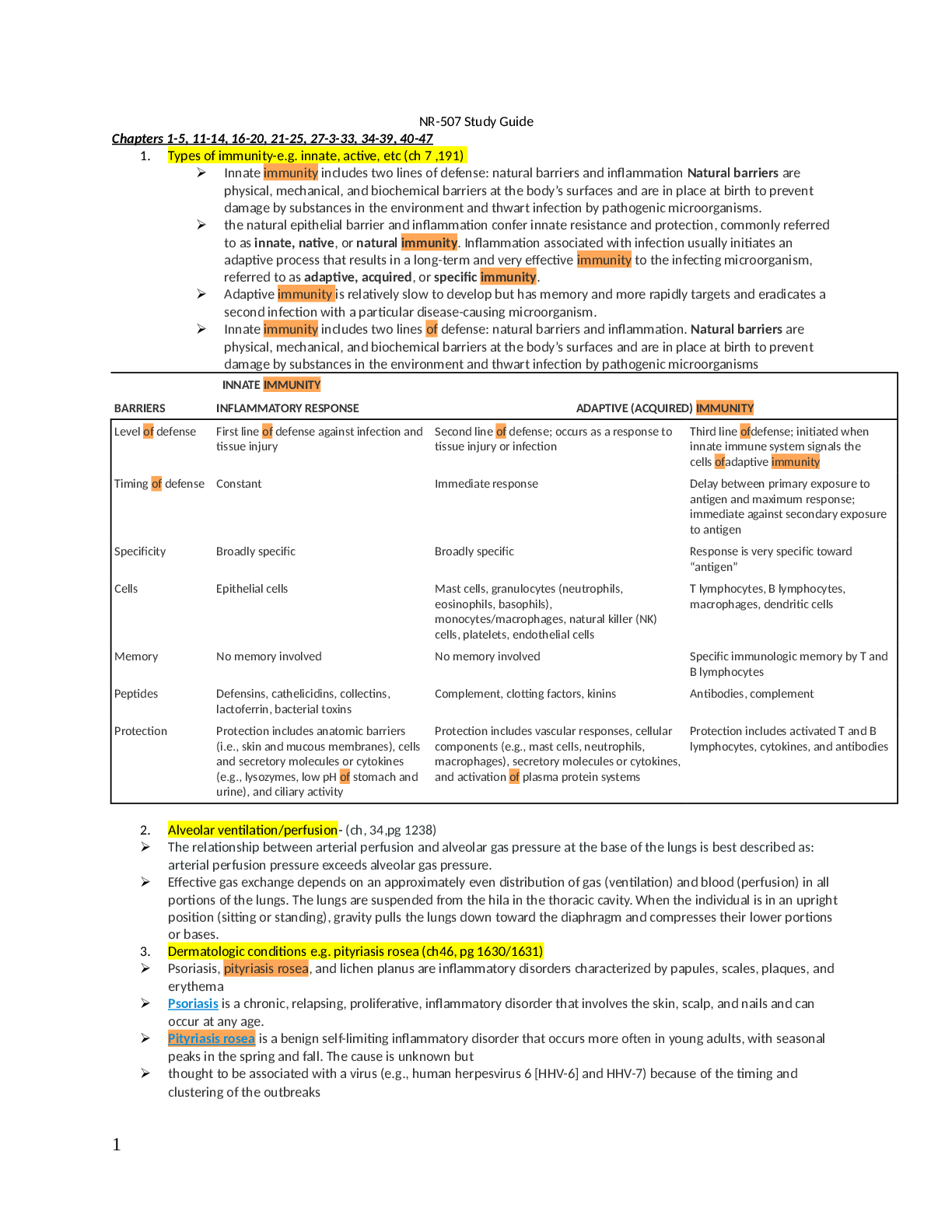
Instant download
Reviews( 0 )
Document information
Connected school, study & course
About the document
Uploaded On
Aug 06, 2021
Number of pages
20
Written in
Additional information
This document has been written for:
Uploaded
Aug 06, 2021
Downloads
0
Views
54



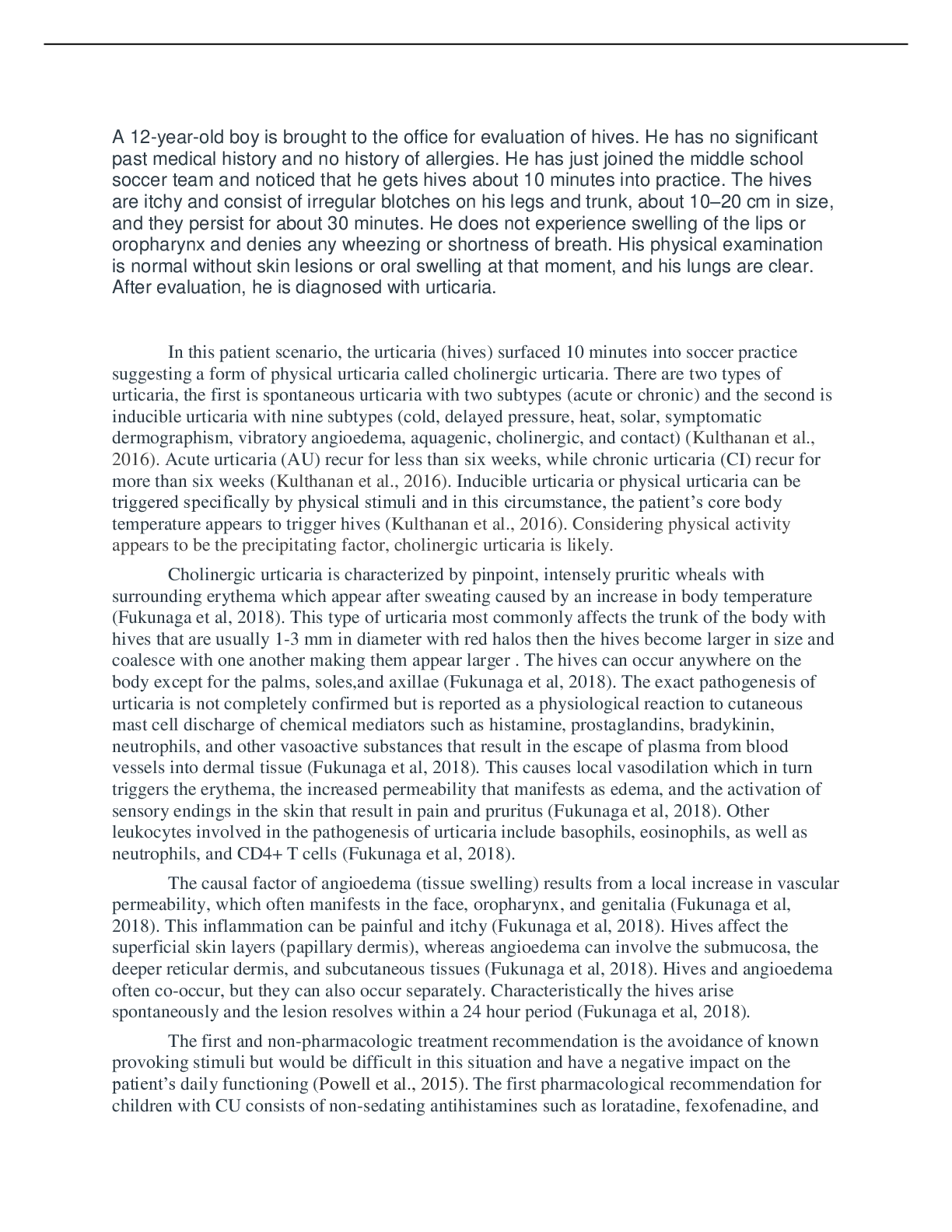
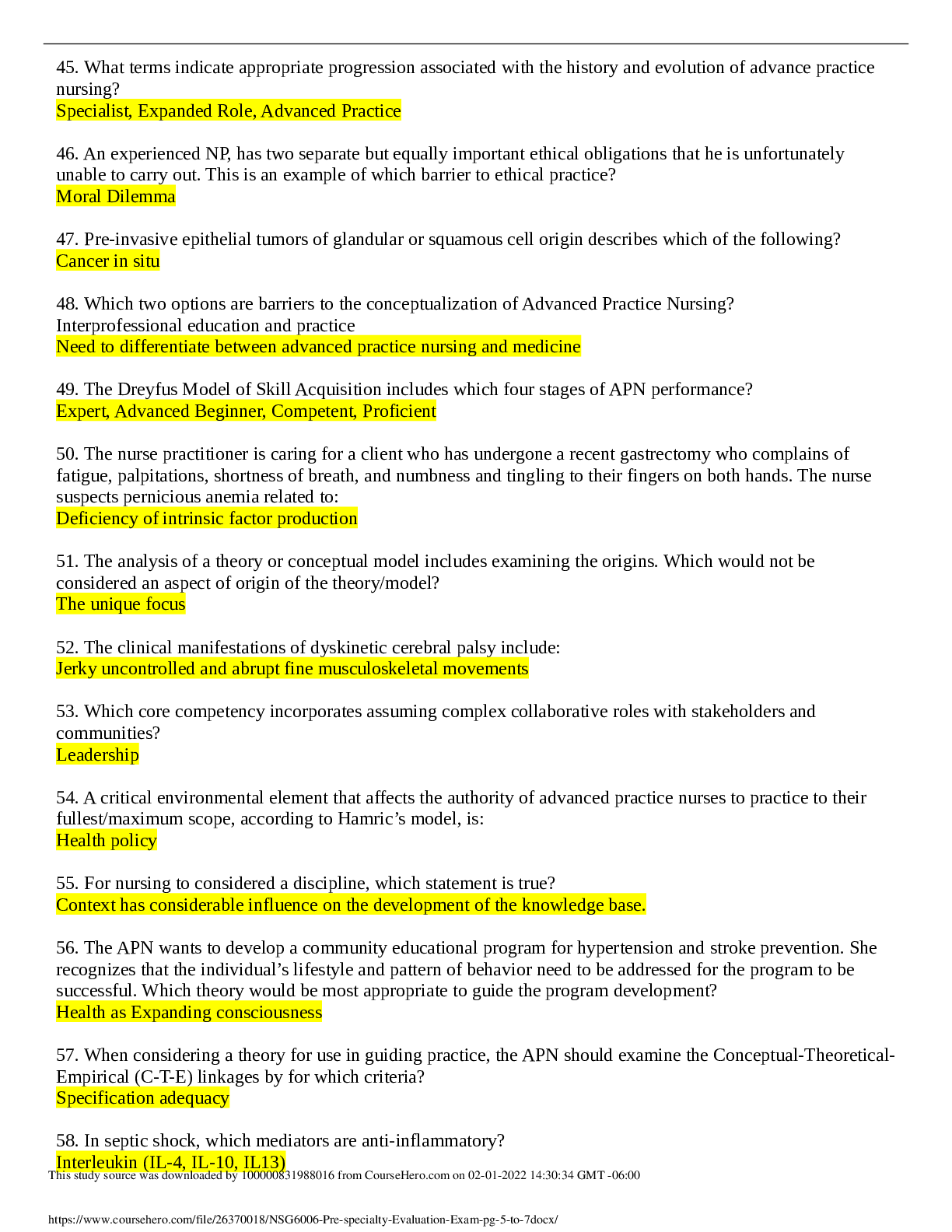





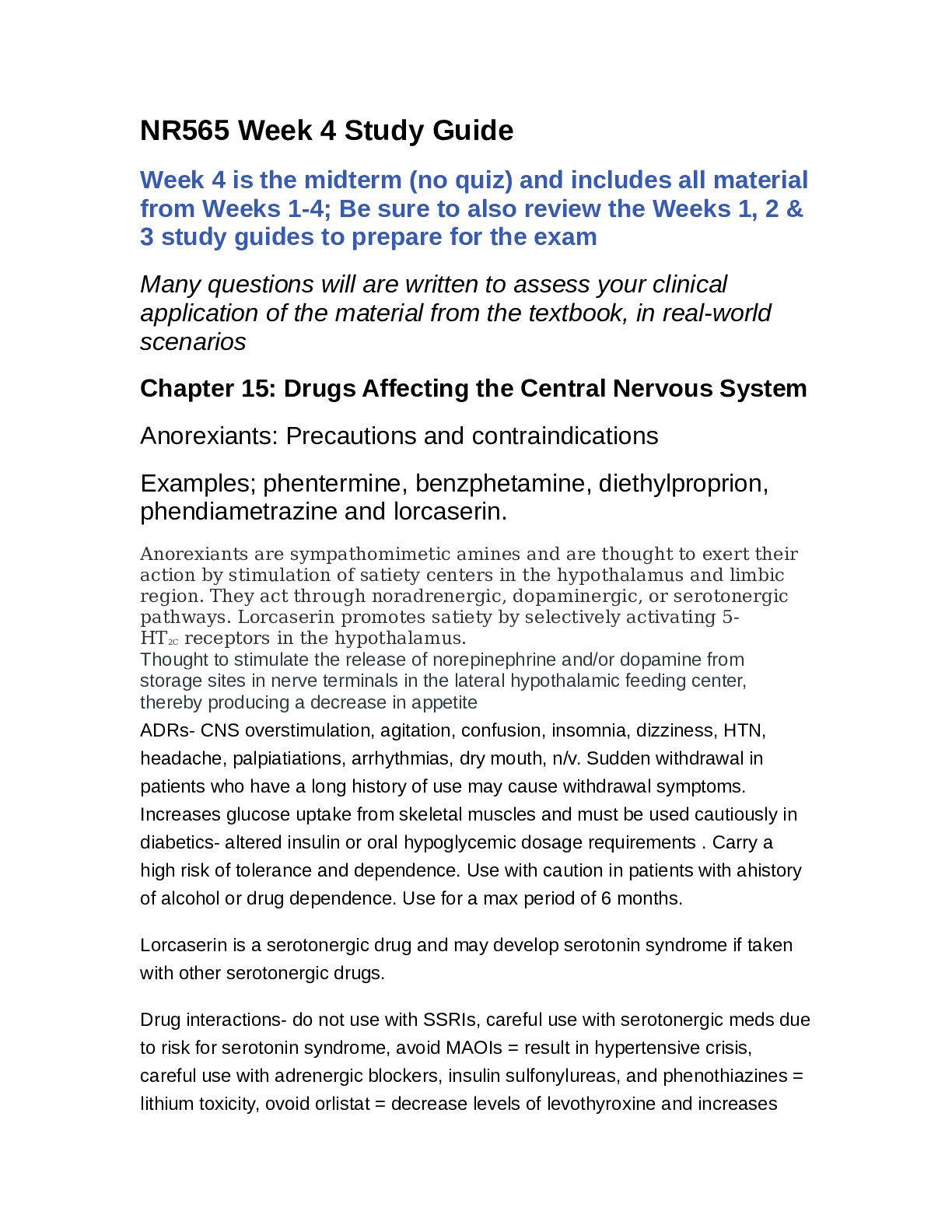
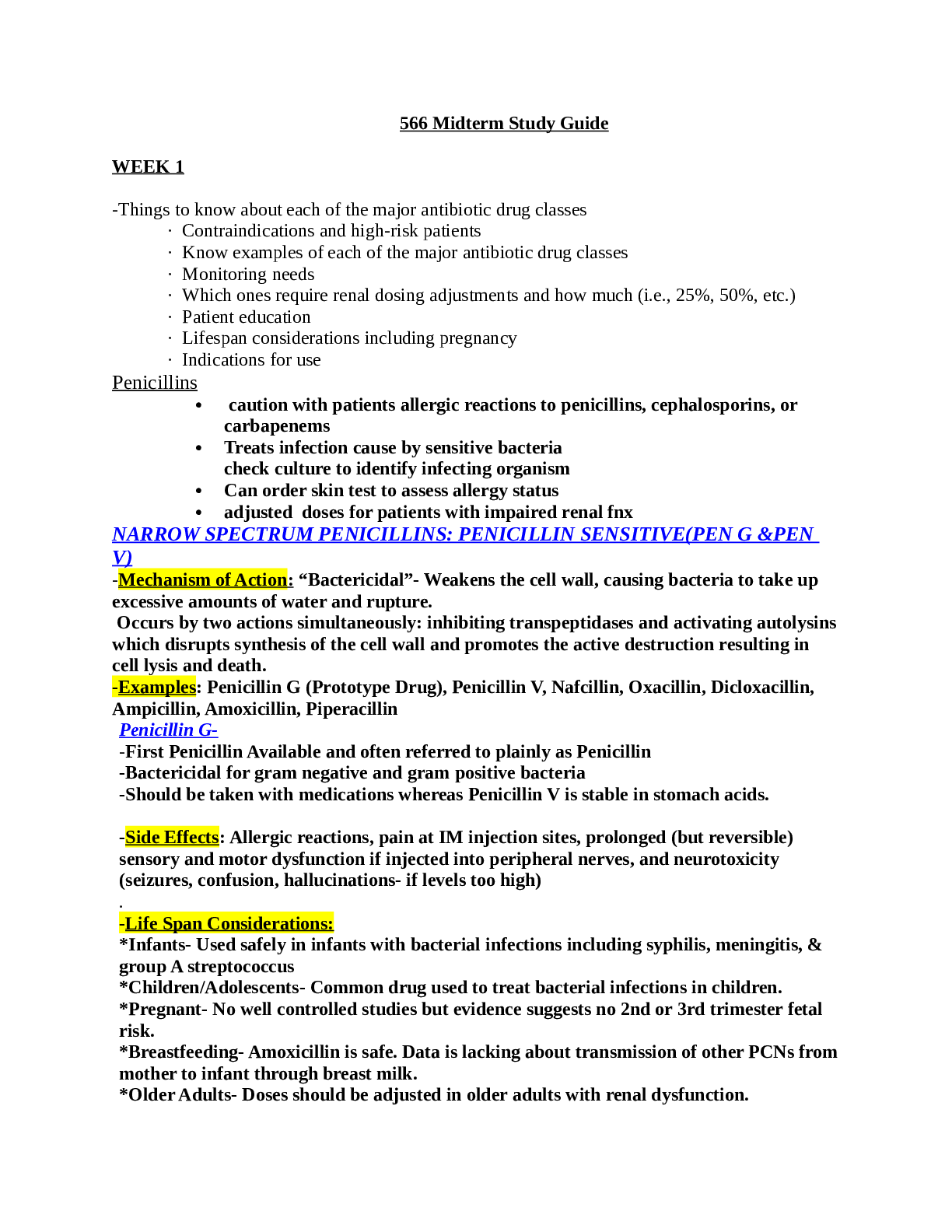


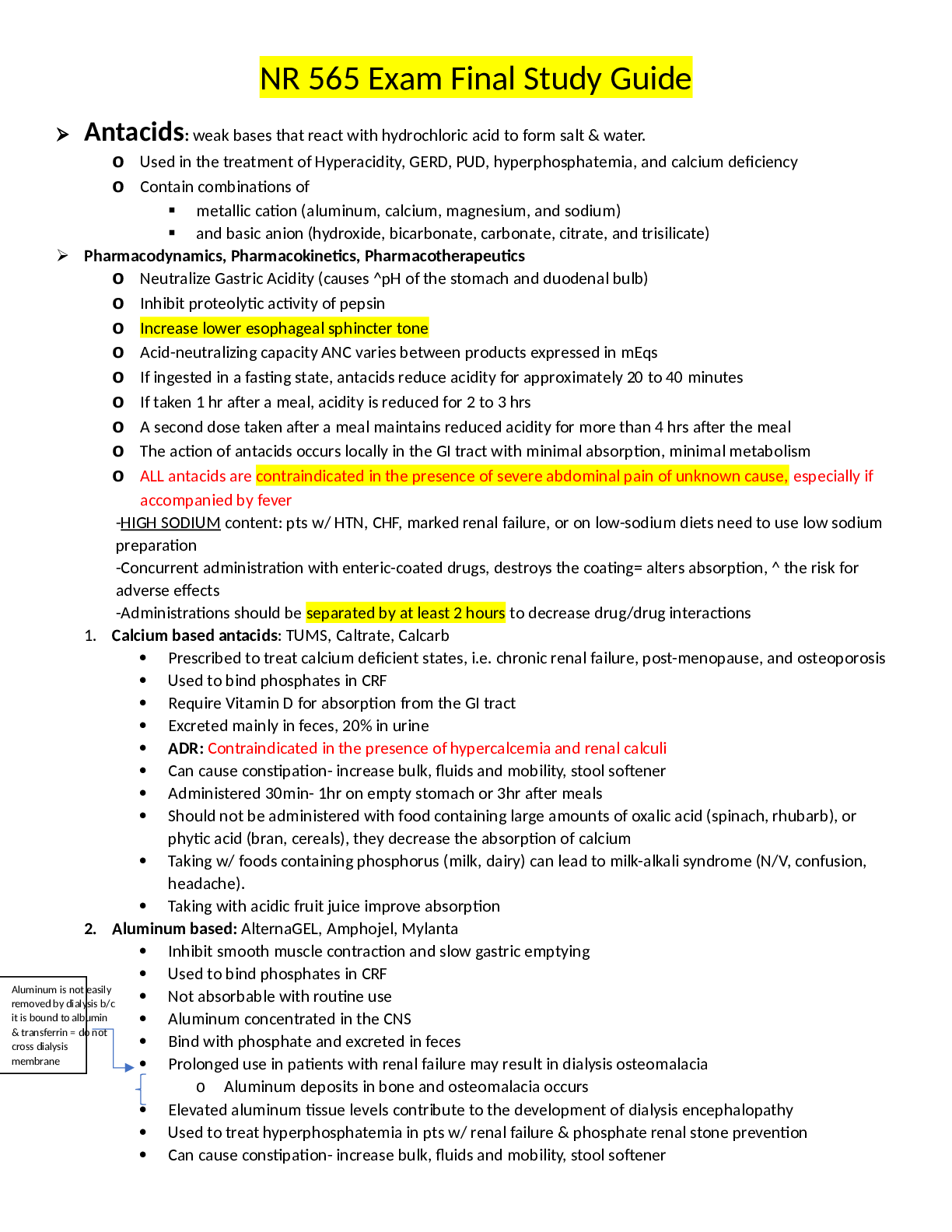



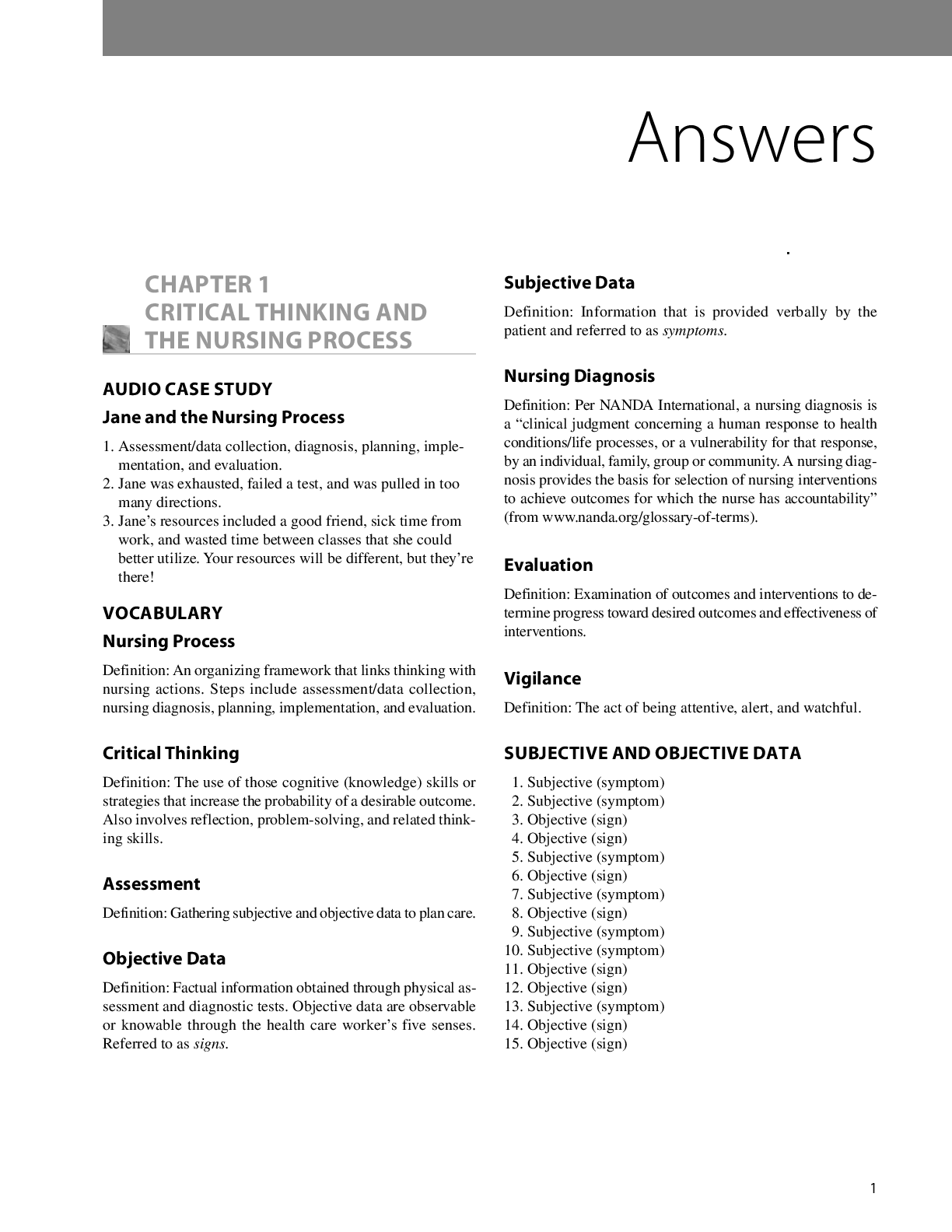
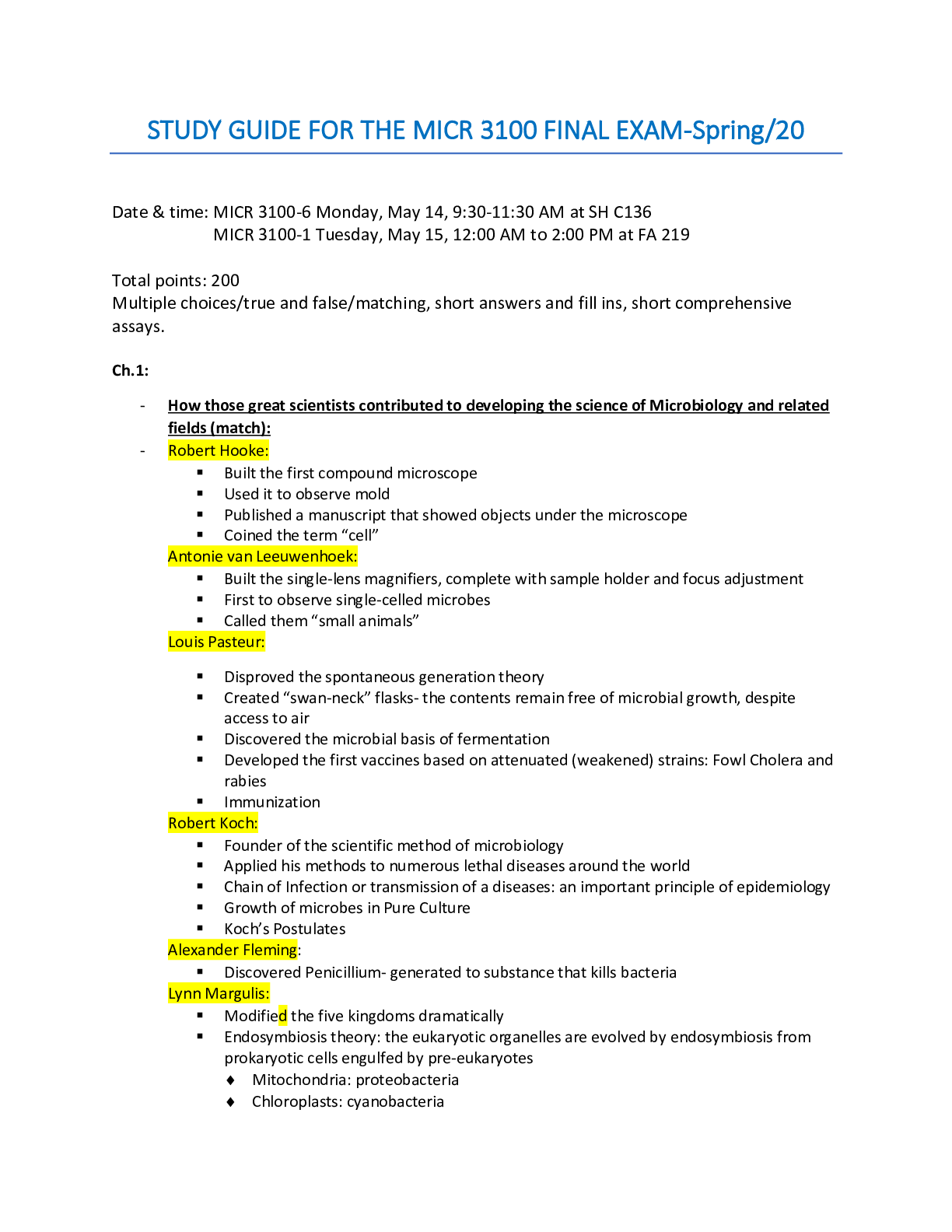

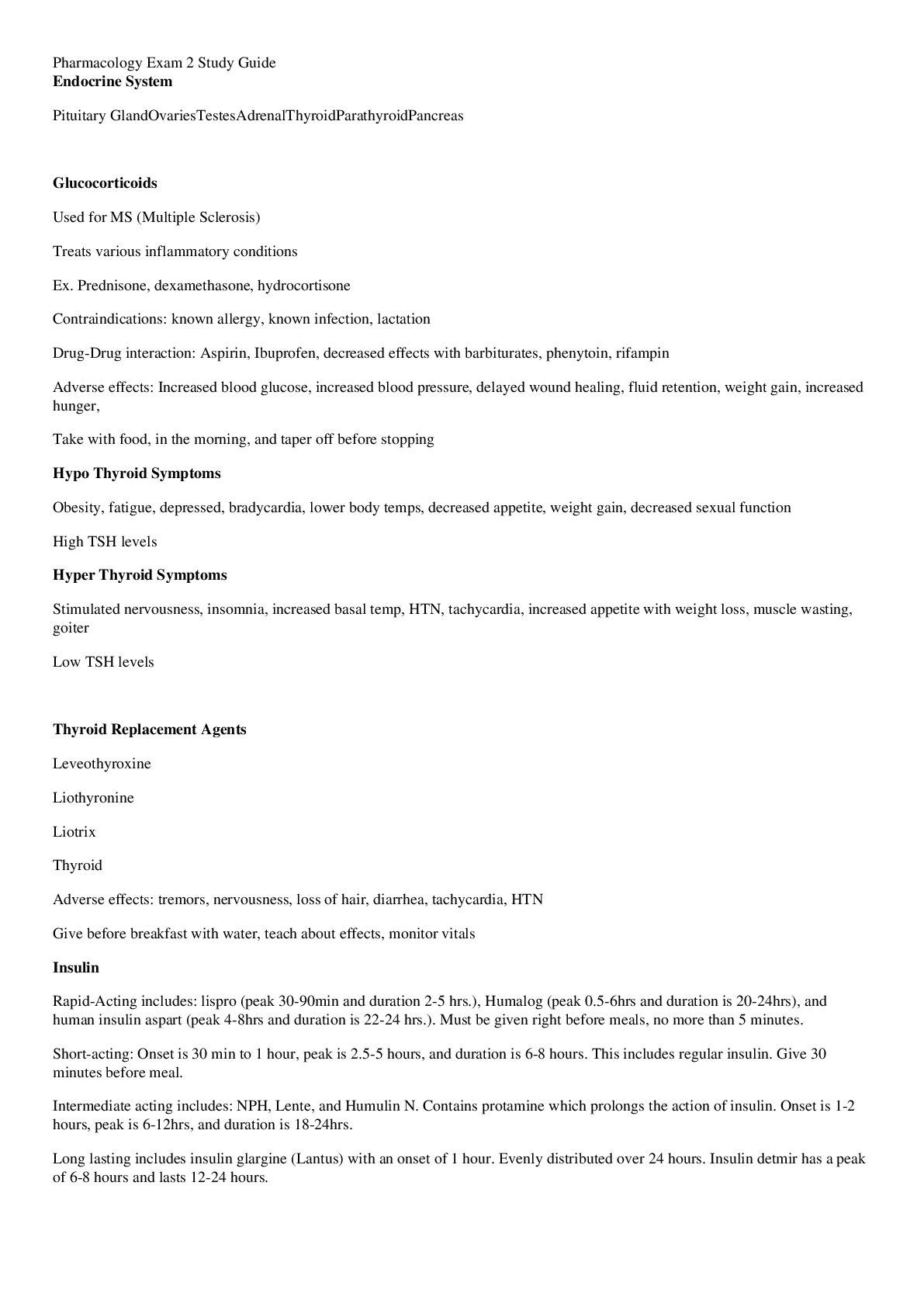
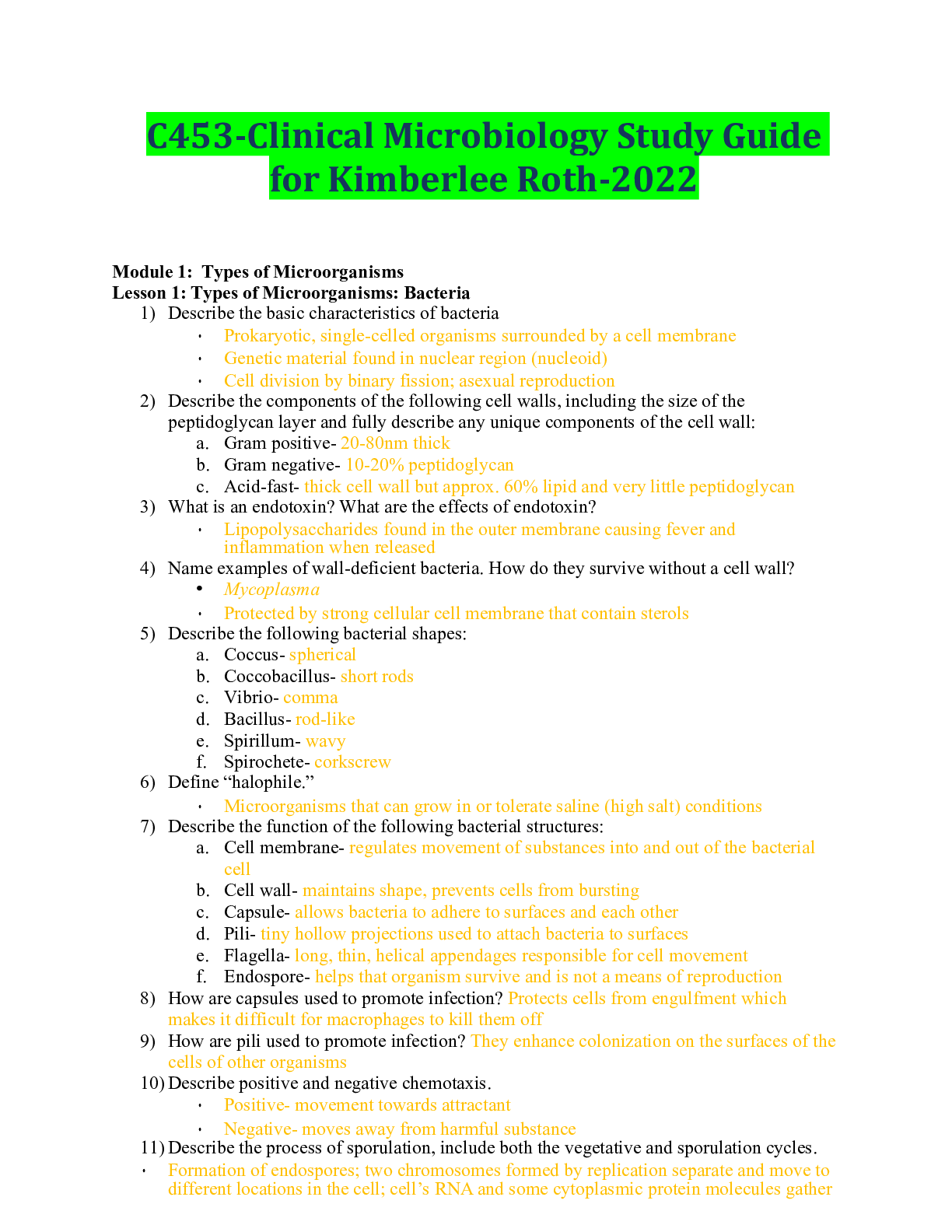
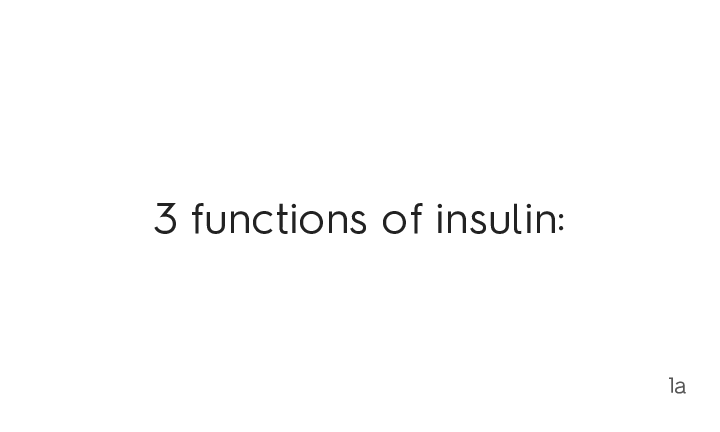
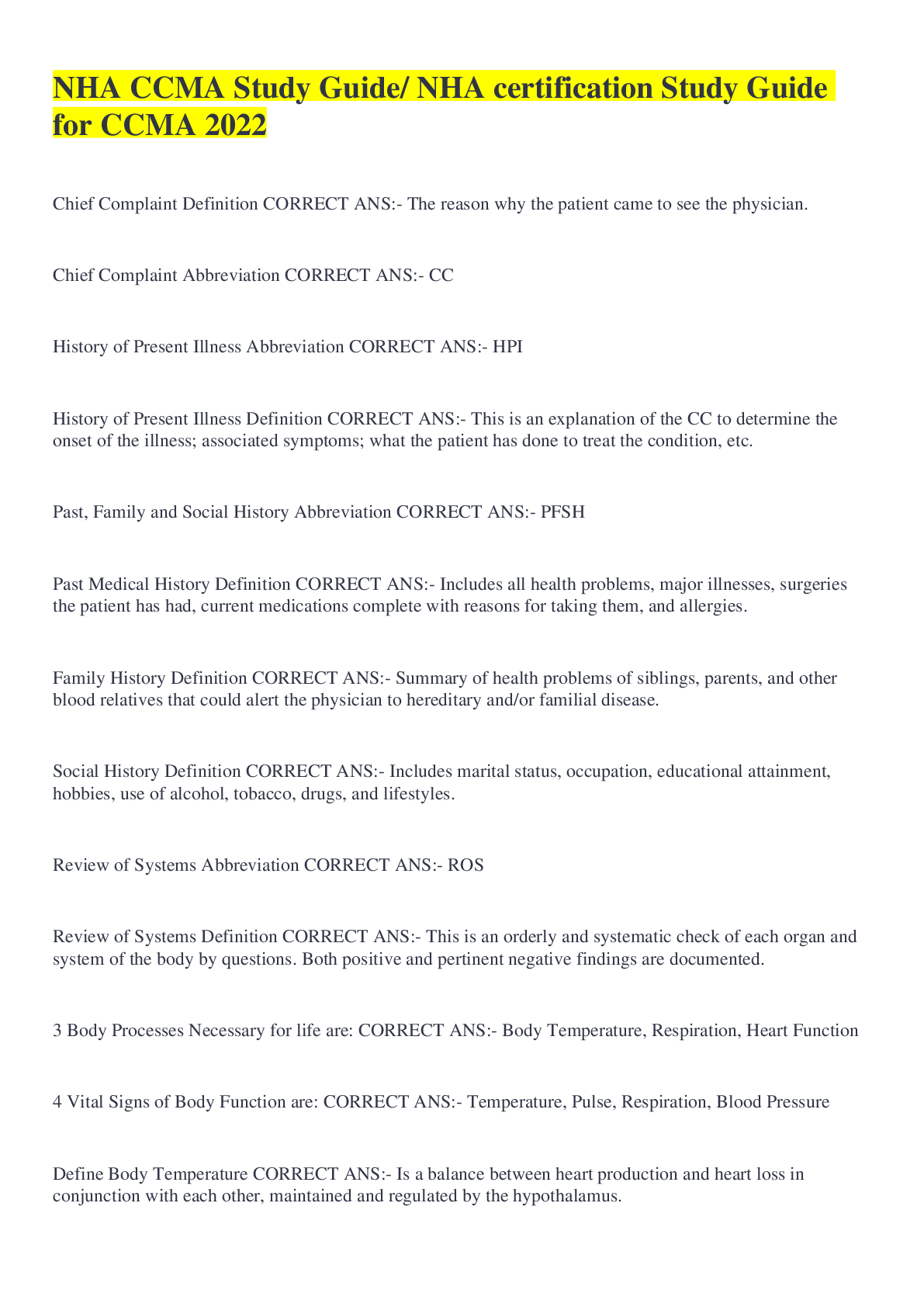
.png)


